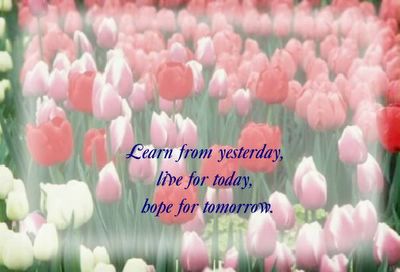The Power of Metrics:The CPM Dashboard Meets Six Sigma
Column published in DM Review Magazine
June 2003 IssueBy
Kent BauerDigital dashboard, executive cockpit, business flight deck. While these may sound like terms from the training manual at the air force academy or a commercial flight simulator, today they are standard vernacular from the virtual glass house to the boardroom.
While CEOs and senior executives endeavor to steer through an era of turbulence and economic uncertainty by leveraging data assets to cut costs and improve operational efficiency, data derivatives such as key performance indicators (KPIs), customer metrics, operational benchmarks and balanced scorecards are becoming common at successful organizations. Gauges, meters, stoplights, interactive charts and alerts are now standard for monitoring and proactively managing business.
The corporate performance management (CPM) dashboard views are typically tied to key indicators companies use to measure performance and manage business. At GE, they have focused on developing KPIs that measure the bottom-line impact of sell (QTD sales, previous day's orders), make (QTD digitization savings, finished goods inventory) and buy (YTD indirect conversion cost percentage change, realized direct e-auction savings) decisions across all businesses.
In the customer relationship management space, companies are using CPM dashboards to measure the success of customer retention, cross-sell and customer servicing programs. However, the term CPM dashboard may have multiple meanings. For our purposes, the CPM dashboard is defined as a customized graphical interface that delivers mission-critical information on a real-time basis to business decision makers via a variety of visuals, including gauges, alerts, charts, table and spreadsheets.
Although gauges, meters and charts are the most visible components of the CPM dashboard, they typically reflect only 10 percent of the development effort. The other 90 percent includes resources devoted to data collection, cleansing, integration, meta data management and database development. Data warehouse, data marts and analytical engine components are the heart and soul of the CPM dashboard. Designed, implemented and managed correctly, these components not only ensure that data is consistent and accurate, but provide transparent drill-downs to the appropriate level of granularity to support business analysis. This allows the business users to investigate alternative cause-and-effect scenarios and base business decisions on real-time data, rather than anecdotal evidence.
What does Six Sigma have in common with the gauges, meters and stoplights on the CPM dash?
The journey from drawing board to successful implementation requires more than the proverbial pixie dust.
The set of comprehensive challenges for the CPM dashboard is extensive, requiring a framework and process that marry:
management's concerns (revenue growth/cost savings),
business needs (data access/analyses) and
technology deliverables (drill-down/collaborative communication capabilities).
While multiple methodologies have been developed to support individual functional areas (balanced scorecard, SDLC, RUP, etc.), only one transcends all - Six Sigma.
Six Sigma was employed at Motorola in the late 1980s as a measure of quality, but has since evolved into an overall business improvement methodology focused on systematically increasing product and process quality.
In the traditional statistical definition, Six Sigma's goal is to achieve no more than 3.4 defects per million opportunities (or Six Sigma) during the design and production of any product or service. In the 1990s, GE, Honeywell, Dow and other companies expanded the concept of Six Sigma to include customer focus, company culture, a statistical toolkit, a business philosophy and an overall goal for quality and performance.
Six Sigma offers an approach that is customer-focused, business-value driven and data and fact-based. Its best practices ensure that customer requirements, executive sponsorship and bottom-line impact are in place long before a project leaves the starting gate. This sounds optimistic, but Six Sigma has the power to deliver. We define Six Sigma as a barometer or thermostat for gauging and directing an organization's strategic focus with a twist of IT: Six Sigma is a comprehensive business management strategy incorporating a broad array of business best practices focused on delivering business value and customer satisfaction by leveraging data assets and IT infrastructure.
Although many of us think of Six Sigma as purely focused on improving existing processes through the DMAIC (design, measure, analyze, improve and control) methodology, a sister methodology DMADV (design, measure, analyze, define and verify) has emerged to address the development of new products and processes. The DMADV process is well suited for IT development projects such as the CPM dashboard. Many Six Sigma tools, such as VOC (voice of consumer), CTQ (critical to quality) trees, stakeholder analysis, affinity diagrams, SIPOC flows and impact assessment, add significant structure to project development efforts while mitigating risk.
Employing Six Sigma during CPM dashboard development and delivery helps assure the integrity of the information generated so business executives have the quality information they need to make decisions that affect company performance and results.
...............................................................................
For more information on related topics visit the following related portals...
Metrics/KPI/BSC.
Kent Bauer is the managing director, Performance Management Practice at GRT Corporation in Stamford, CT. He has more than 15 years of experience in managing and developing CRM, database marketing, data mining and data warehousing solutions for the financial, information services, healthcare and CPG industries. Bauer has an MBA in Statistics and an APC in Finance from the Stern Graduate School of Business, New York University. A published author and industry speaker, his recent workshops have focused on integrating performance management and Six Sigma for KPI and dashboard development.
Please contact Bauer at
kent.bauer@grtcorp.com.




